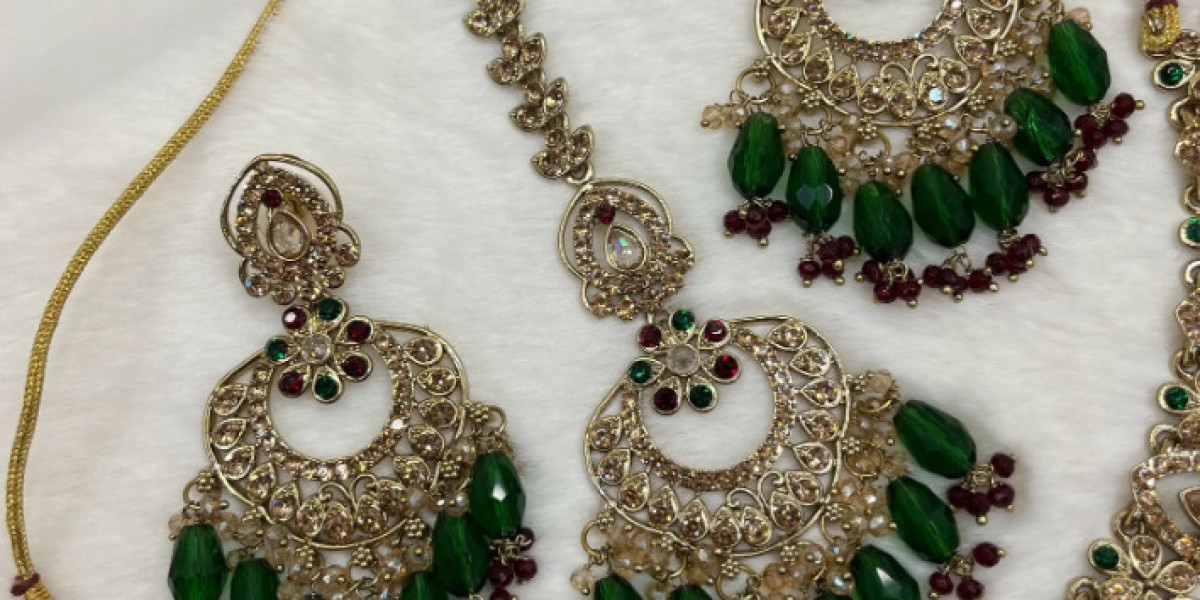Jewellery has always held a special place in human history. From ancient civilizations to modern-day fashion trends, adornments have been used not only for their beauty but also to symbolize cultural heritage, status, and personal identity. Traditional jewellery, with its rich history and intricate craftsmanship, continues to captivate people worldwide. Whether worn during festivals, weddings, or everyday life, traditional jewellery serves as a connection to our roots, heritage, and craftsmanship that transcends generations.
The Beauty of Tradition in Every Piece
Traditional Jewellery often incorporates designs and techniques that have been passed down through centuries. What sets these pieces apart is their deep connection to the culture they represent. Each region, community, or ethnic group has its own distinct jewellery styles, materials, and craftsmanship methods. From the intricate goldwork of India to the silver filigree of Portugal, every piece tells a story of the people who created it.
In India, for example, traditional jewellery includes iconic pieces like jhumkas (dangling earrings), kadas (bracelets), maang tikka (headpieces), and nose rings, often crafted in gold or silver and adorned with precious stones. Each piece carries a specific meaning, whether it's to mark a significant occasion, represent a family’s wealth, or act as a token of love and blessings.
Craftsmanship and Heritage
One of the most fascinating aspects of traditional jewellery is the incredible craftsmanship involved. Artisans often spend weeks, months, or even years perfecting a single piece, using techniques passed down through generations. In many cultures, jewellery-making is more than just a skill; it’s an art form and a way to preserve tradition.
In regions like Rajasthan and Gujarat, India, artisans use age-old techniques like kundan, meena, and jadau to create elaborate pieces that showcase unparalleled artistry. Similarly, in Africa, traditional jewellery is often hand-carved from wood, beads, or metals, each design symbolizing different aspects of life, such as love, power, and protection.
Symbolism Behind Traditional Jewellery
Beyond aesthetics, traditional jewellery carries significant symbolism. In many cultures, jewellery is used to mark important life events, such as births, weddings, or rites of passage. For example, in South Asian cultures, brides wear heavy jewellery made of gold and precious stones during their wedding to symbolize prosperity, protection, and good fortune. Similarly, in African cultures, beads and metal jewellery often indicate one's social status, tribe, or marital status, with specific colours and patterns holding deep meaning.
In the Middle East, traditional jewellery often includes intricate designs, such as filigree work and inlaid gemstones, that reflect the rich Islamic art and heritage. Pieces like bangle sets and headpieces are not only aesthetically pleasing but also hold spiritual significance, providing protection and blessings to the wearer.
Adapting Tradition to Modern Fashion
While traditional jewellery maintains its significance, it has also evolved over time to fit contemporary fashion trends. Modern designers have seamlessly blended traditional techniques with new materials and designs, creating a fusion of the old and new. Today, traditional jewellery is not confined to weddings or festivals. It is being worn by fashion-forward individuals who embrace cultural diversity and are eager to incorporate timeless pieces into their everyday style.
For instance, the trend of statement earrings has taken off globally, with many people choosing bold, oversized versions inspired by traditional jewellery designs. Gold chains, chokers, and pendant necklaces have also seen a resurgence, with many pieces featuring intricate craftsmanship inspired by ancient jewellery styles. The revival of vintage jewellery has also seen a shift towards appreciating traditional techniques, with antique markets around the world offering valuable pieces that reflect the craftsmanship of bygone eras.
Investing in Traditional Jewellery
Beyond the beauty and cultural significance, traditional jewellery is also seen as an investment. Many pieces of traditional jewellery, especially those made from gold or silver, appreciate in value over time. In countries like India, owning a collection of traditional jewellery is not only a symbol of heritage but also a financial asset, passed down through generations. Precious stones like diamonds, emeralds, and rubies are often incorporated into traditional jewellery, making these pieces not only valuable for their craftsmanship but also for their precious materials.
Conclusion
Traditional jewellery is more than just an accessory. It is a representation of cultural heritage, artistry, and personal identity. From intricate goldwork to hand-carved bead designs, these pieces continue to captivate and inspire. Whether worn to mark a special occasion, passed down as heirlooms, or incorporated into modern-day fashion, traditional jewellery remains a timeless and cherished part of human history. Its beauty, craftsmanship, and symbolism ensure that it will continue to thrive for generations to come, making it an invaluable asset to any collection.




